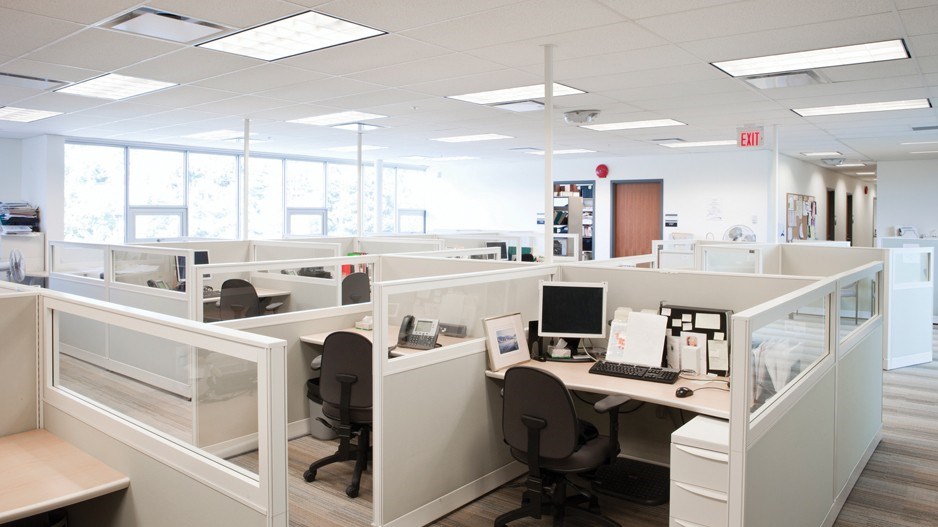With B.C.’s spiking COVID case numbers scuttling the province’s plan for a full Step 4 reopening by September 7, many Metro Vancouver businesses that had intended to bring workers back to the office this fall have scrapped those plans.
Jason Santeford, managing director of the Vancouver office for global architecture and design firm Gensler, said that almost all of the clients the company is working with to recreate post-COVID office spaces had plans to bring some employees back in anticipation of the reopening. Many of these companies were scrambling to get their offices updated by September 7, but Santeford said those plans have now been largely pushed back by months.
The desire to bring employees back on-site in a centralized office – even for less than a five-day work week – is real among business owners and managers.
A recent released Business Council of British Columbia (BCBC) survey found that the majority of top business executives in the province expect “a significant reduction in remote work from pandemic levels” after health officials declare the office environment safe.
The report showed almost 55% of business leaders surveyed have more than three-fifths of their workforce working off-site, and 35% of respondents said more than four-fifths of their workforce is off-site. However, when asked how much of their workforce will remain remote post-COVID only 10% of executives said three-fifths of their employees or more would remain working remotely.
The same survey showed that 40% of respondents want remote employees reduced to less than one-fifth of the total workforce – if not eliminated completely. Another 32% said they wanted to keep less than two-fifths of their staff working remotely post-pandemic.
Those numbers aren’t surprising for Santeford, who noted that while Gensler did see a lull in business when the pandemic first hit in March 2020, inquiries from companies about redesigning their office spaces for a quicker and safer return to work, quickly picked up in the following months and intensified this year as B.C. began to reopen in the summer.
BCBC vice-president of policy David Williams, who wrote the report on the survey, noted that the results do not mean companies are willing to sacrifice employees’ safety to get them back in the office. He said the question was framed to seek respondents’ views on how they want their companies to operate once COVID restrictions are lifted.
And even though many business leaders thought the full Step 4 reopening would happen sooner, almost all of the same executives will hold off the shift away from remote work until it is safe to do so, Williams said.
He agreed, however, that companies are increasingly weary of a full remote-work model.
“A lot of businesses say that the value creation that happens in the office – the corridor conversations, the in-person meetings where ideas get shared – it just helps to have those direct communication,” Williams said. “It’s very hard to replicate that in the virtual world. But virtual will still be part of the future work environment. We can see the benefits of being flexible, and employees certainly value that. So I think the pendulum is going to swing, and it’s just about finding the right balance.… But I think everyone wants to get back to some semblance of normal after the pandemic, even if it doesn’t look exactly like what we had before.”
Santeford noted, however, that to achieve that new normal at the office, a company will need “total buy-in” on office space reconfiguration and overall workplace policies – whether on-site or off-site.
There are also major investment costs, he added. The most expensive additions are typically the technological infrastructure that allows remote workers and on-site employees to operate cohesively.
But while such upgrades are costly, Santeford said company executives can no longer simply will their workforce back to 100% on-site work when it’s safe to do so – especially while other companies are offering the opportunity for employees to continue working from home after the pandemic. •




